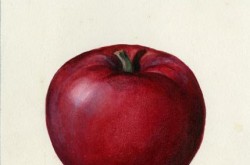Seed Plot Marker
This article was originally written and submitted as part of a Canada 150 Project, the Innovation Storybook, to crowdsource stories of Canadian innovation with partners across Canada. The content has since been migrated to Ingenium’s Channel, a digital hub featuring curated content related to science, technology and innovation.
Sometimes scientific inquiry depends on simple tools.
For Charles Saunders, this oak seed-plot marker helped advance his research on Marquis wheat in the early twentieth century. Saunders was a meticulous cereals scientist at the Central Experimental Farm in Ottawa between 1903 and 1922. He used the 4-foot marker, with its 96 pointed dowels, to make neatly spaced rows of wheat and other crops. The result was a uniform research plot that allowed Saunders to closely examine the growing plants and select those with desirable characteristics. Saunders used this technique to develop Marquis wheat, a hybrid variety that matured earlier and yielded more grain than other varieties. First planted in quantity in 1909, Marquis became western Canada’s dominant wheat variety and established the country as a major wheat exporter. While Marquis was not resistant to plant diseases such as rust, it established Charles Saunders’s reputation as a brilliant agronomist and the role of federal science in nation building.


























